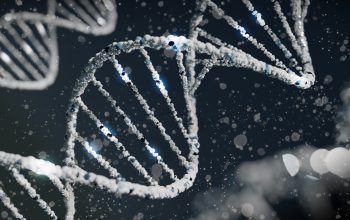Photo Credit: Michael Herren, Unsplash
The focus should be on real aliens, not viral ones.
Joseph Pontisso, Contributor
Any talk today of life on other planets must inevitably involve the mention of a recent UFO media sensation. However, with scientists making groundbreaking discoveries as the media gets excited about extraterrestrials on earth, are we focusing on the wrong aliens?
On September 12, at its first ever hearing on Unidentified Aerial Phenomena (UAPs), better known as UFOs, Mexico’s Congress was presented with two objects purported to be the bodies of extraterrestrials. The stiff-looking figures, with their three-fingered hands and out-of-this-world appearance, quickly became an internet sensation. However, many prominent scientific bodies, including NASA and the National Autonomous University of Mexico (UNAM) Institute of Astronomy, immediately challenged the validity of the alleged remains.
On the very same day, the BBC released an article describing the recent findings of the James Webb Space Telescope (JWST) in its observation of K2-18b, an exoplanet orbiting a star 120 light-years away. The telescope, in doing analyses of the planet’s atmosphere, may have detected the presence of dimethyl sulfide, a molecule which only exists on earth as a byproduct of living organisms, suggesting that life may exist on K2-18b. Should we not be more excited about this news than about what is almost certainly another UFO stunt?
The figures unveiled in Mexico show such a resemblance to the aliens of popular culture — including the one from Disney’s ET: The Extra Terrestrial — that the whole thing feels tremendously forced. In addition, the scientific information given by Jamie Maussan, the UFO researcher and journalist who presented the objects at the UAP hearing, make little sense. For example, Maussan maintains that the objects had been dated using carbon-14 isotope ratios, but, according to scientists from UNAM, the carbon isotope ratios found on other planets would be different from those found on earth, making dating impossible if the objects were truly extraterrestrial in origin. Most importantly however, scientific bodies have been denied access to the specimens, meaning that there is no hope of scientific validation, and suggesting little desire on Maussan’s part to engage with true scientific authorities.
In contrast, several scientific indicators are giving astrobiologists hope that JWST’s observations may indeed point to alien life. K2-18b is thought to possess liquid water oceans, and most of the dimethyl sulfide on earth comes from ocean-inhabiting phytoplankton. K2-18b also has a considerable amount of carbon dioxide in its atmosphere, meaning that carbon, a necessary component of all known life, is present. And of course, in contrast to Maussan’s objects, the official report on the observations is set to be published in a scientific journal, to the eager anticipation of astrobiologists and astrophysicists worldwide.
Humankind may indeed have discovered aliens this September. However, society at large is fascinated with preposterous claims about the bodies of humanoid aliens on earth, and not with real astronomical studies. If we paid more attention to scientific developments and less to UFO pseudoscience, we could be sharing evidence of extraterrestrials which is much more credible, and therefore all the more exciting.




